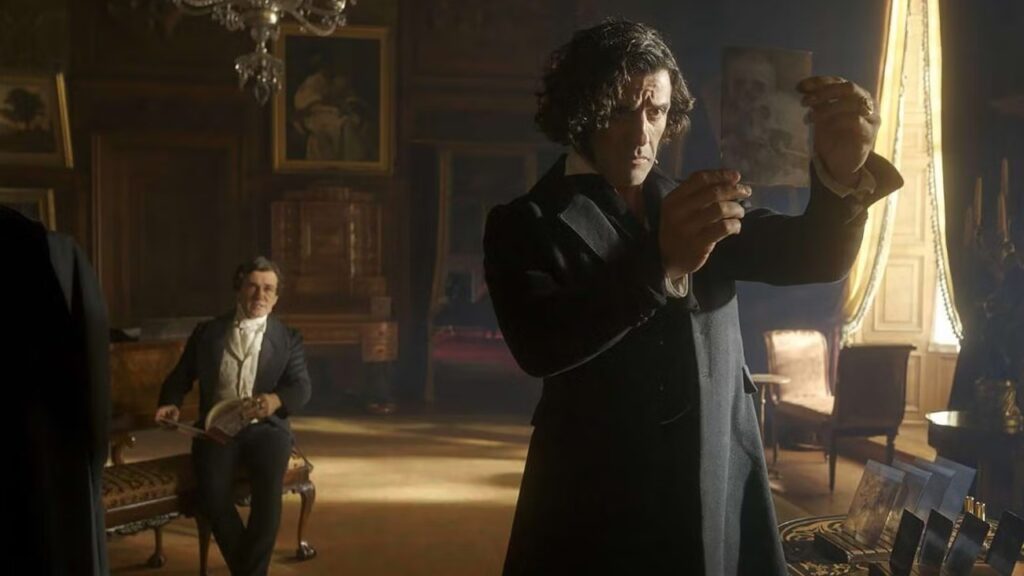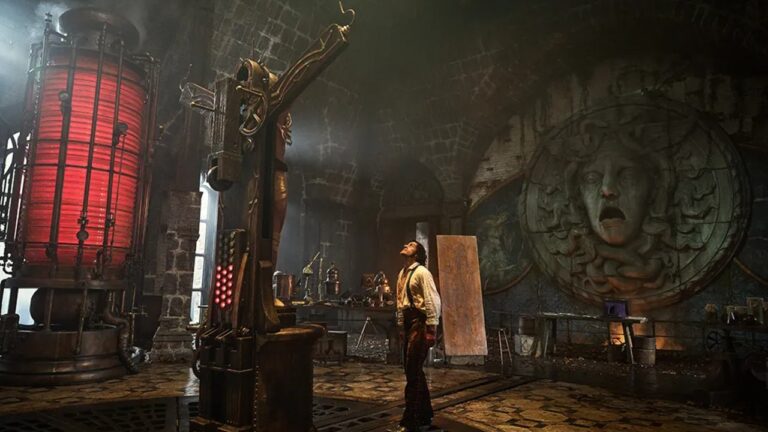Note: This article contains major plot details from Guillermo del Toro’s ‘Frankenstein.’
Guillermo del Toro’s long-awaited ‘Frankenstein’ finally came to life in 2025 after nearly twenty years of anticipation. Produced by Netflix and inspired by Mary Shelley’s 1818 novel, the Gothic science fiction film features an impressive cast led by Oscar Isaac as Victor Frankenstein, Jacob Elordi as the Creature, and Mia Goth as Elizabeth. Christoph Waltz, Felix Kammerer, Charles Dance, and David Bradley complete the ensemble.
Principal photography began in Toronto in February 2024 and concluded in September, with additional filming in Edinburgh and Lincolnshire. After premiering at the 82nd Venice International Film Festival on August 30, the film received a limited theatrical release on October 17 and will arrive on Netflix globally on November 7.
The Creature’s Humanity and the Cost of Creation

Del Toro had been attached to the project since 2007, calling it his “dream film.” Over the years, several versions were developed but never completed due to studio changes and Universal’s focus on its Dark Universe franchise. After the success of Guillermo del Toro’s Pinocchio, Netflix revived the project in 2023 and gave him full creative control. Jacob Elordi stepped in for Andrew Garfield as the Creature following production delays caused by the SAG-AFTRA strikes, which required del Toro to redesign the character in only nine weeks. The director described his version of Frankenstein not as a horror film but as an emotional story about life, death, and loneliness, saying it would focus on “the heart of creation itself.”
The film begins with a Danish expedition trapped in Arctic ice, where Captain Anderson discovers a dying Victor Frankenstein. When a mysterious being attacks the ship, Victor recounts the chain of events that led to their meeting. The story then returns to his youth, showing a man marked by grief and ambition. After losing his mother and living under the pressure of his father’s expectations, Victor becomes determined to defy mortality. Funded by arms dealer Henrich Harlander, he assembles a body from corpses and brings it to life during a storm. His triumph, however, quickly becomes his downfall.
Elordi’s Creature is both powerful and deeply sympathetic. Initially feared and confined, he slowly learns to speak and think, developing an emotional awareness that challenges Victor’s view of him as an experiment. Elizabeth, played by Mia Goth, recognizes his humanity and forms a connection that Victor cannot accept. When fear and jealousy overtake him, Victor destroys the only bond the Creature has found. Exiled and alone, the Creature discovers brief kindness with a blind man who teaches him to read and to trust, before losing that peace as well. The film’s final act takes place in the frozen Arctic, where creator and creation meet again and face the cost of their choices.
The Heart of Del Toro’s Frankenstein

Del Toro’s Frankenstein stands apart for its sincerity and vision. Rather than emphasizing horror, the film explores the emotional and moral consequences of creation. The sets and cinematography blend the grandeur of Shelley’s world with the texture and atmosphere typical of del Toro’s storytelling. Oscar Isaac gives a nuanced performance as Victor, capturing both his intelligence and his self-destruction. Jacob Elordi brings emotional range and physical presence to the Creature, transforming a familiar role into something deeply moving. Mia Goth’s performance adds grace and warmth, grounding the story in compassion.
The final moments leave the audience with a sense of quiet reflection rather than closure. The Creature stands alone, watching the ship drift toward the sunrise and reaching out to embrace the light, just as Victor once taught him. It is a simple gesture that feels like both farewell and forgiveness. In retelling Mary Shelley’s timeless story, del Toro reminds us that every act of creation carries both love and sorrow. Frankenstein may speak of monsters and makers, yet at its heart, it is about the human need to be seen, to be understood, and to keep reaching for the light even after everything else fades.




